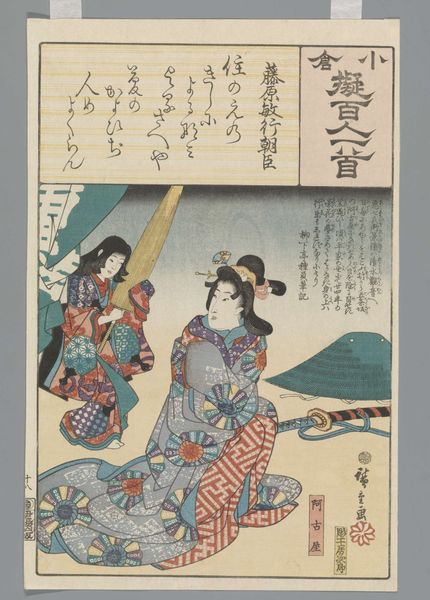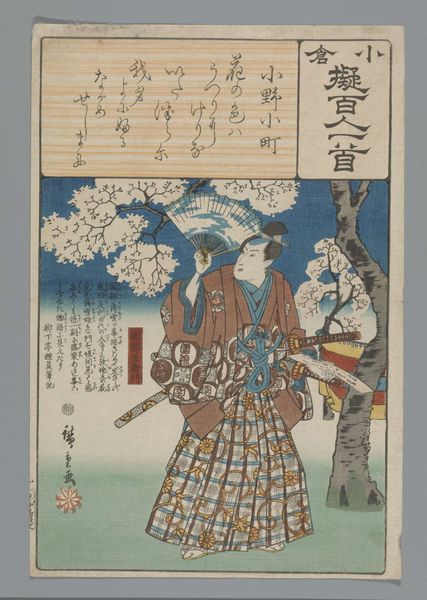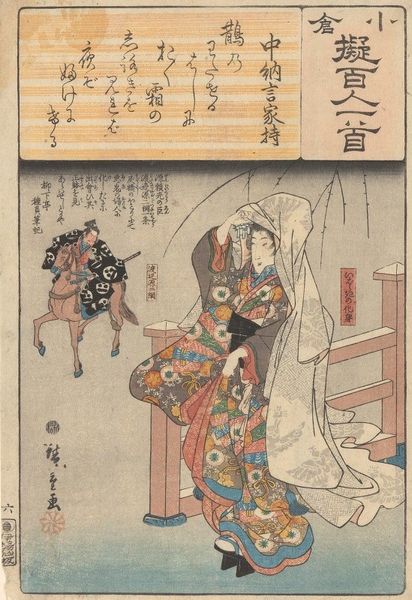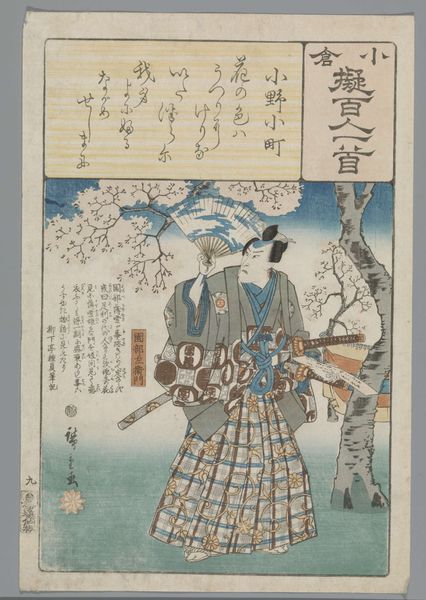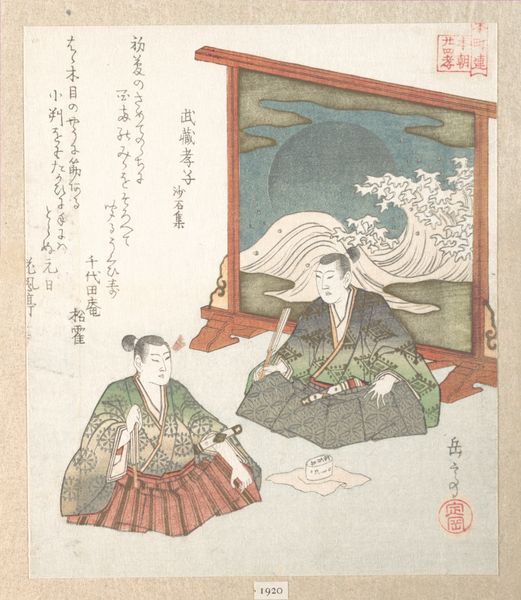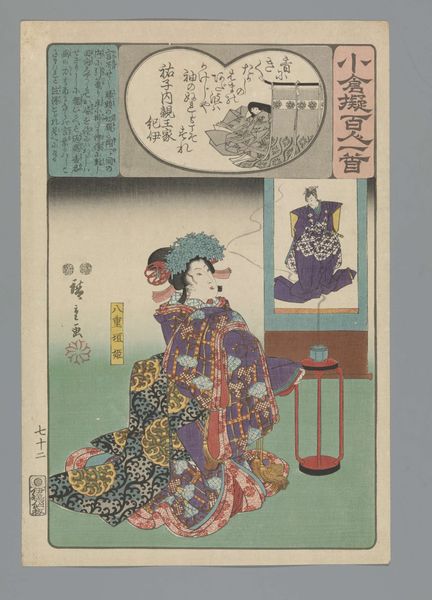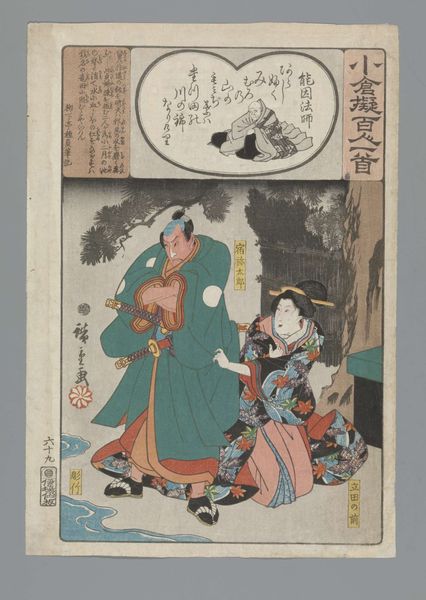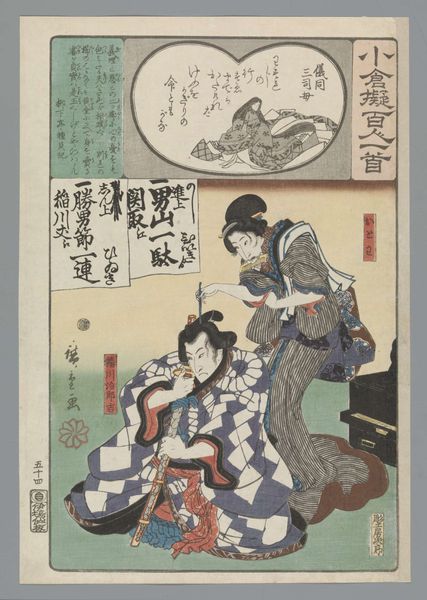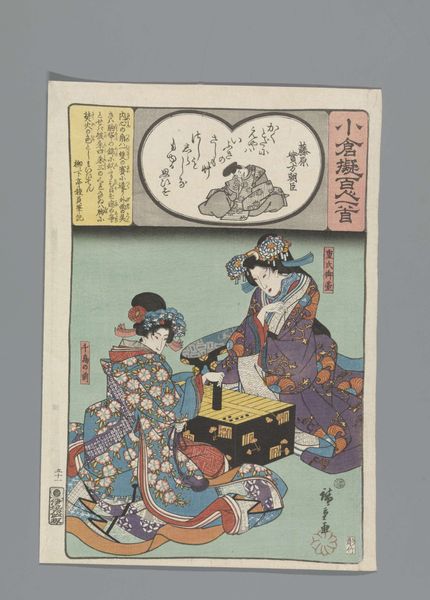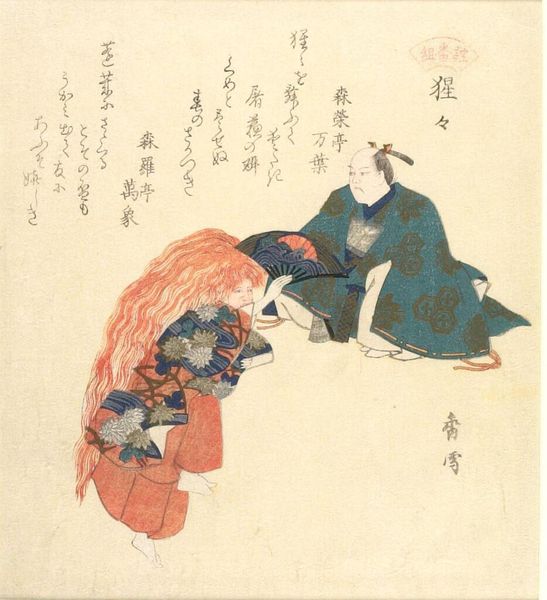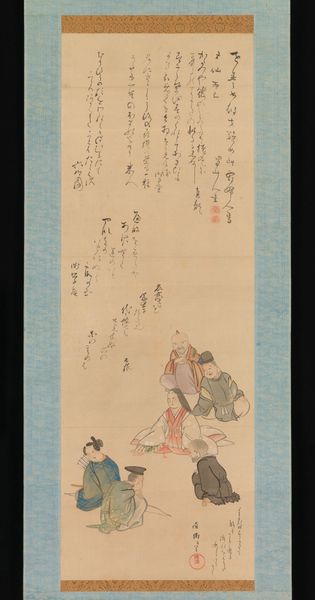
print, woodblock-print
#
portrait
# print
#
asian-art
#
landscape
#
ukiyo-e
#
figuration
#
woodblock-print
Dimensions: height mm, width mm
Copyright: Rijks Museum: Open Domain
Curator: This is "Ogura Imitation of the One Hundred Poems," a woodblock print made by Utagawa Hiroshige between 1843 and 1845. Editor: The color palette is really striking, especially those deep indigos and reds juxtaposed against the hazy ground. It’s a moody and textural image, almost dreamlike. Curator: It's part of the ukiyo-e tradition, literally meaning "pictures of the floating world.” Ukiyo-e prints were integral to the commercial and artistic landscape of the Edo period. They were a mass produced, inexpensive item affordable to many. Editor: The means of production matter so much here! Think about the skilled labor involved—the artist's design, the carver's precision, the printer's technique. And the availability of these prints must have profoundly democratized access to art in Japanese society. Did the choice of color affect the social perception? Curator: Certainly. Color dictated the price point to some degree. Indigo dyes were readily available; richer colors would have been pricier. But beyond economics, consider the social context: these prints were consumed in homes, shared amongst communities, even used for advertising. They reflected and shaped popular taste and cultural trends. Notice how it depicts a beauty of the Yoshiwara district. Editor: Looking closer, I notice some figures faintly drawn into the background; they're almost ghostly. What can you tell me about the subjects? Curator: This particular print draws from the classical poetry anthology, the "Ogura Hyakunin Isshu." Hiroshige produced a series that reimagined those classic poems through contemporary life and settings. By embedding that classical knowledge into these pieces they offered both cultural appreciation and were of social commentary. Editor: It bridges different social and aesthetic worlds. The past speaks to the present through skillful artisanship that rendered that communication affordable and transportable. The museum plays a vital role in sustaining conversations about such artifacts! Curator: Absolutely. Museums offer an important platform for understanding both art and labor. What strikes you as particularly powerful? Editor: It’s the synthesis of the old and new and how that's facilitated by material means—labor, production, and distribution. It makes me rethink assumptions about high and low art. Curator: Agreed, its legacy reminds us to value cultural material for the social history it holds. Editor: A perfect encapsulation of process, poem, and place.
Comments
No comments
Be the first to comment and join the conversation on the ultimate creative platform.
